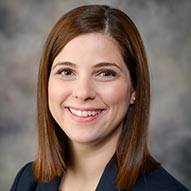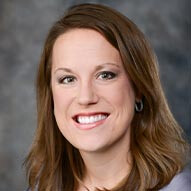Pediatric parasomnias
What are pediatric parasomnias?
Parasomnias are disorders that disrupt sleep. Parasomnias are far more common in children than in adults. Most of the time parasomnias only happen occasionally and are nothing to worry about.
If your child has frequent parasomnias—or they are negatively impacting his waking life—it may be time to see a doctor.
What are the different types of pediatric parasomnias?
Nightmares - Everyone has nightmares sometimes. These vivid, scary dreams are especially common for kids, who often have trouble falling back asleep after waking from one. They are a normal part of childhood development that may begin as early as 18 months of age.
Sleepwalking - Sleepwalking, or somnambulism, most often occurs in children between the ages of 5 and 12. Aside from nightmares, it is the most well known of the parasomnias. It is more common in boys and usually goes away by adolescence. Contrary to popular belief, it's not dangerous to wake a sleepwalker.
Sleep talking - Sleep talking, or somniloquy, is a parasomnia in which a child talks during sleep. Like sleepwalking, sleep talking affects more boys than girls. As with the other parasomnias, sleep talking usually doesn't usually last long and often goes away by the early teen years.
Sleep terrors - Sleep terrors, also known as night terrors, are perhaps the most frightening of the parasomnias. Children with sleep terrors may sweat, scream or sit up in bed during an episode. Sleep terrors are not nightmares. Instead, unlike nightmares, which occur during REM sleep, sleep terrors happen during non-REM sleep. A child waking from a sleep terror usually can't remember why he was afraid. Sleep terrors may last for up to 20 minutes. Fortunately, they are rare and only affect between 1 and 6% of children.
What are the signs and symptoms of pediatric parasomnias?
Suddenly waking disoriented and confused (nightmares and sleep terrors)
Performing complex tasks while asleep, such as walking, running or talking
Grinding teeth while sleeping
Sleep paralysis
How are pediatric parasomnias diagnosed?
A doctor may perform a physical exam to rule out any other disorders or diseases that may be behind your child's parasomnia.
A psychological exam can sometimes identify the reasons for certain parasomnias. A recent U.K. study found that kids who are bullied at school have more nightmares than their peers.
Your child's doctor may order a sleep study (polysomnography) as well. During a sleep study, your child will stay overnight in a sleep lab. Doctors will use sensors and cameras to track your child's brain waves, heartbeat and eye movements, among other things.
What are the causes of pediatric parasomnias?
Parasomnias may be genetic, as they often run in families. Some parasomnias can be the result of a brain disorder or caused by other sleep disorders, including sleep apnea or certain medications.
How are pediatric parasomnias treated?
Most of the time, kids with parasomnias don't need any treatment at all. Scheduling a regular bedtime routine or managing your child’s stress can help. Parasomnias usually diminish over time and are rarely a problem by adolescence.
For some kids, the parasomnia is so disruptive to their lives or the operation of the family, certain treatments may help. The treatment will depend on the type and severity of your child's parasomnia.
Nightmares - Childhood nightmares are normal but, for some kids, there may be a psychological reason for their bad dreams. Interventions such as behavioral cognitive therapy, relaxation and hypnosis may help children with nightmares.
Sleepwalking - Most of the time, interventions work better than treatments for sleepwalking. Despite what you may have heard, it's not dangerous to wake a sleepwalking child. If you do, remember to be gentle as she will probably be disoriented or confused. Keep areas near the bed free from clutter and dangerous objects. Sometimes doctors will prescribe tranquilizers, which can help reduce the number of episodes.
Sleep talking - Treatment isn't usually needed for sleep talking children. If it persists over a long period of time, it may be due to stress or anxiety. As with nightmares, behavioral interventions may help.
Sleep terrors - Sleep terrors usually go away by the time a child reaches 5 years of age. If they don't, or are frequent and severe, behavioral therapies can help. Very rarely, doctors will prescribe medications such as benzodiazepines or certain antidepressants to treat sleep terrors.
Pediatric parasomnias doctors and providers
 Elisa Basora Rovira, MDPediatric Pulmonologist and Sleep Medicine
Elisa Basora Rovira, MDPediatric Pulmonologist and Sleep Medicine Michelle Caraballo, MDPediatric Pulmonologist and Sleep Medicine
Michelle Caraballo, MDPediatric Pulmonologist and Sleep Medicine Tanya Martinez-Fernandez, MDPediatric Pulmonologist/Sleep Medicine
Tanya Martinez-Fernandez, MDPediatric Pulmonologist/Sleep Medicine S. Kamal Naqvi, MDPediatric Pulmonologist/Sleep Medicine
S. Kamal Naqvi, MDPediatric Pulmonologist/Sleep Medicine Anna Wani, MDPediatric Sleep Medicine Specialist
Anna Wani, MDPediatric Sleep Medicine Specialist W. David Brown, PhDPediatric Psychologist - Sleep Medicine
W. David Brown, PhDPediatric Psychologist - Sleep Medicine Annie Kincaid, APRN, FNPNurse Practitioner - Pulmonology
Annie Kincaid, APRN, FNPNurse Practitioner - Pulmonology Rachel Rosen, APRN, PNP-PCNurse Practitioner - Sleep Disorders
Rachel Rosen, APRN, PNP-PCNurse Practitioner - Sleep Disorders